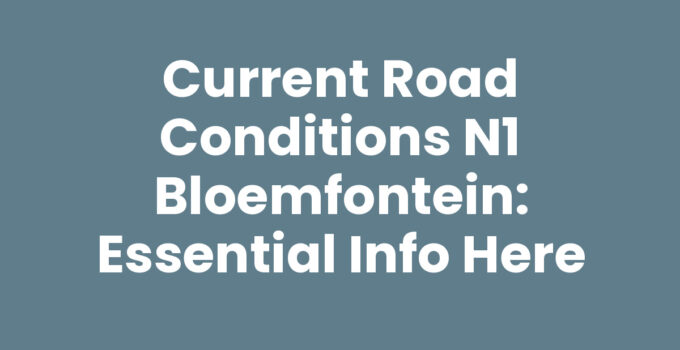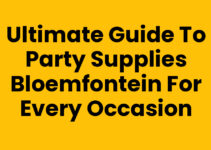Traveling through Bloemfontein along the N1 highway can be both scenic and challenging. As a vital route connecting different parts of South Africa, understanding the road conditions is crucial for ensuring a safe journey. Whether you’re commuting, taking a road trip, or just passing through, staying informed about the current road conditions can help you avoid unpleasant surprises.
Road Conditions N1 Bloemfontein: A Step-by-Step Guide
When it comes to road conditions N1 Bloemfontein, there are several factors to consider for a safe and smooth journey. Here’s a step-by-step guide to help you navigate this vital highway:
- Check Real-Time Updates: Always check for real-time updates on road conditions before you hit the road. Websites like the South African National Roads Agency (SANRAL) provide updates on traffic, weather, and roadworks.
- Plan Your Route: Knowing your route can save you time and stress. Use GPS navigation apps to analyze alternative paths should the N1 experience delays or road closures.
- Weather Considerations: Weather can drastically alter road conditions. Heavy rain or snow can lead to slippery roads and reduced visibility. Check local weather forecasts to anticipate conditions.
- Inspect Your Vehicle: Before starting your journey, ensure your vehicle is roadworthy. Check tire pressure, brake fluid levels, and perform a routine inspection to avoid breakdowns.
- Be Mindful of Construction Zones: Frequent construction can lead to detours and delays. Observing construction signs and heeding lane closures is paramount.
- Understand Local Traffic Regulations: Different regions may have varying traffic regulations. Familiarize yourself with regulations that apply to Bloemfontein and surrounding areas.
- Emergency Preparedness: Carry an emergency kit that includes an extra tire, basic tools, and first-aid supplies. Prepare for unexpected incidents by being equipped.
- Follow Traffic Reports: Listen to local radio stations while driving for traffic updates, accidents, and road condition changes.
See Also: Experience the Thrill of Tandem Skydive Near Bloemfontein
What to Expect: Current Conditions and Common Challenges
As of now, traffic along the N1 Bloemfontein is generally moderate, but conditions can change rapidly due to various factors. Here are some common challenges you might face:
- Heavy Traffic: Especially during peak hours, traffic can get congested, particularly near intersections. Plan accordingly.
- Potholes and Road Damage: Like many highways, weather and wear can cause potholes. Drive defensively and keep an eye on the road ahead.
- Animal Crossings: The N1 passes through rural areas where wildlife may cross the road. Drive cautiously, especially at dusk and dawn.
Recommended Reading: Discover the Best Bloemfontein Guesthouses with Pool Options
Benefits of Staying Informed About Road Conditions
Understanding the road conditions can significantly enhance your travel experience. Here’s why being informed is essential:
- Safety: Knowing current conditions helps you avoid potential hazards, ensuring a safer trip for you and your passengers.
- Time Efficiency: By planning your route based on real-time conditions, you can save time and avoid unnecessary delays.
- Peace of Mind: Knowledge about road conditions can reduce travel anxiety, making your journey more enjoyable.
In conclusion, staying updated on road conditions N1 Bloemfontein is crucial for a successful trip. From planning your route to being aware of potential challenges, informed drivers are safer drivers. Utilize technological resources and be proactive in your preparations for the best travel experience.
Read Also: Expert Music Theory Lessons Bloemfontein: Elevate Your Skills
Frequently Asked Questions
What resources can I use to check road conditions on the N1?
You can use the official SANRAL website, GPS navigation apps, and local radio stations for real-time updates.
Are potholes a major issue on the N1 Bloemfontein?
Yes, potholes can occur; be vigilant while driving and report any serious issues to local authorities.
What should I do if I encounter an accident on the N1?
If safe to do so, call emergency services, then report the accident and follow directions from traffic officials.



